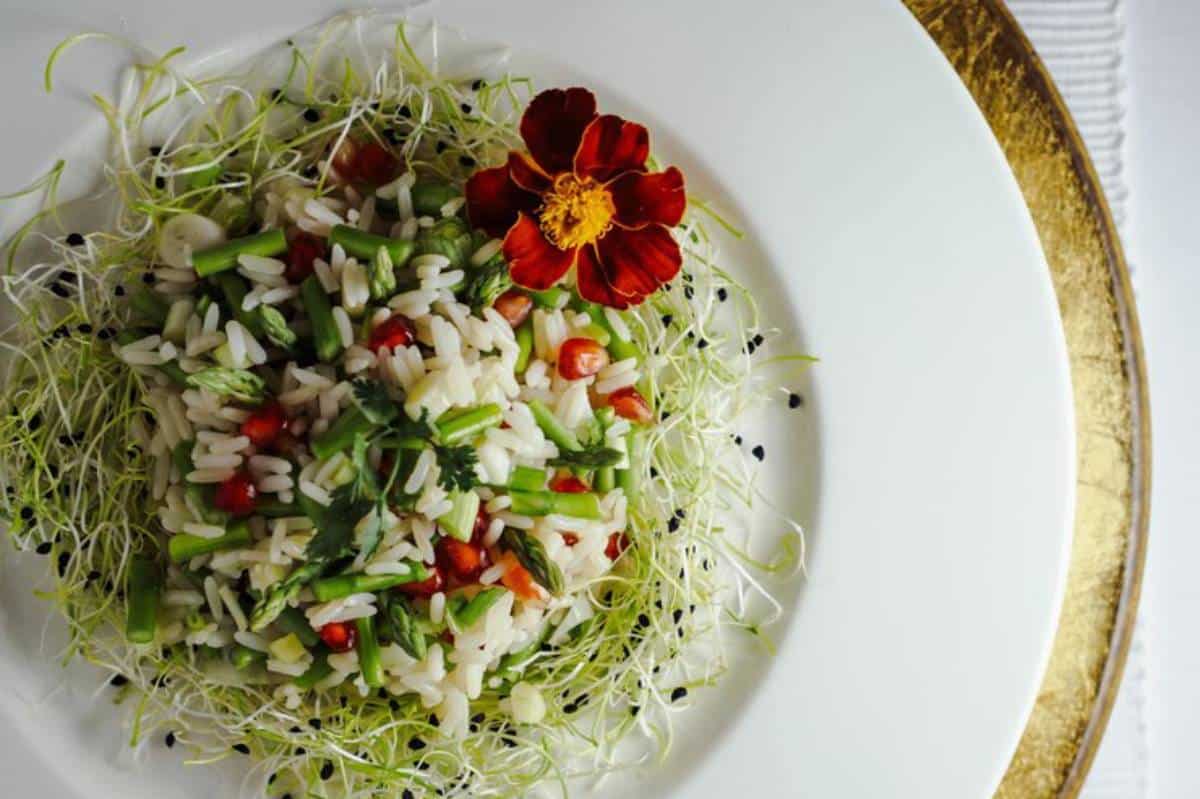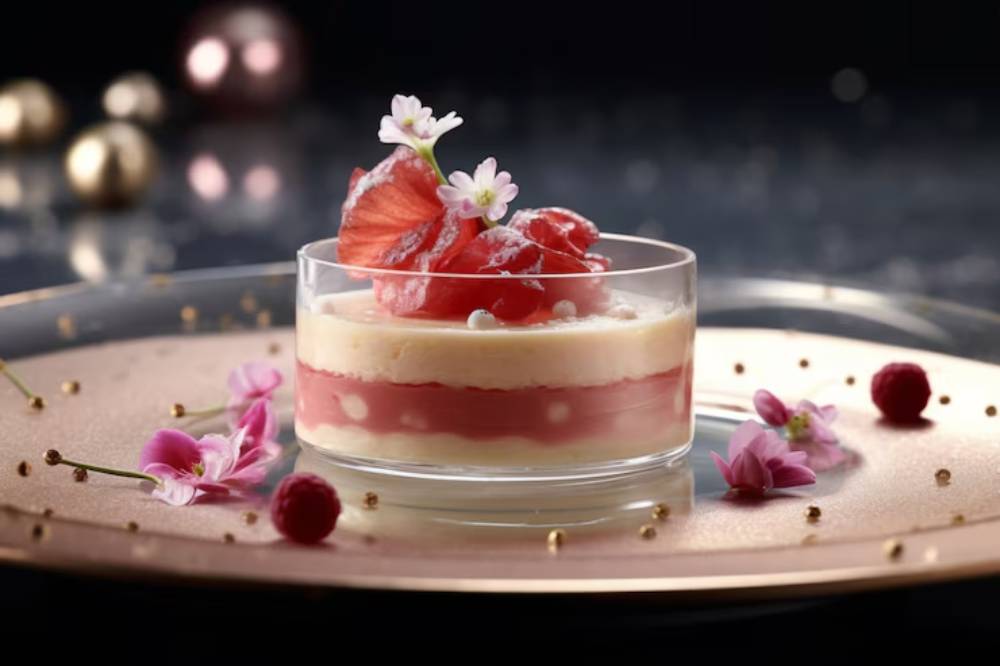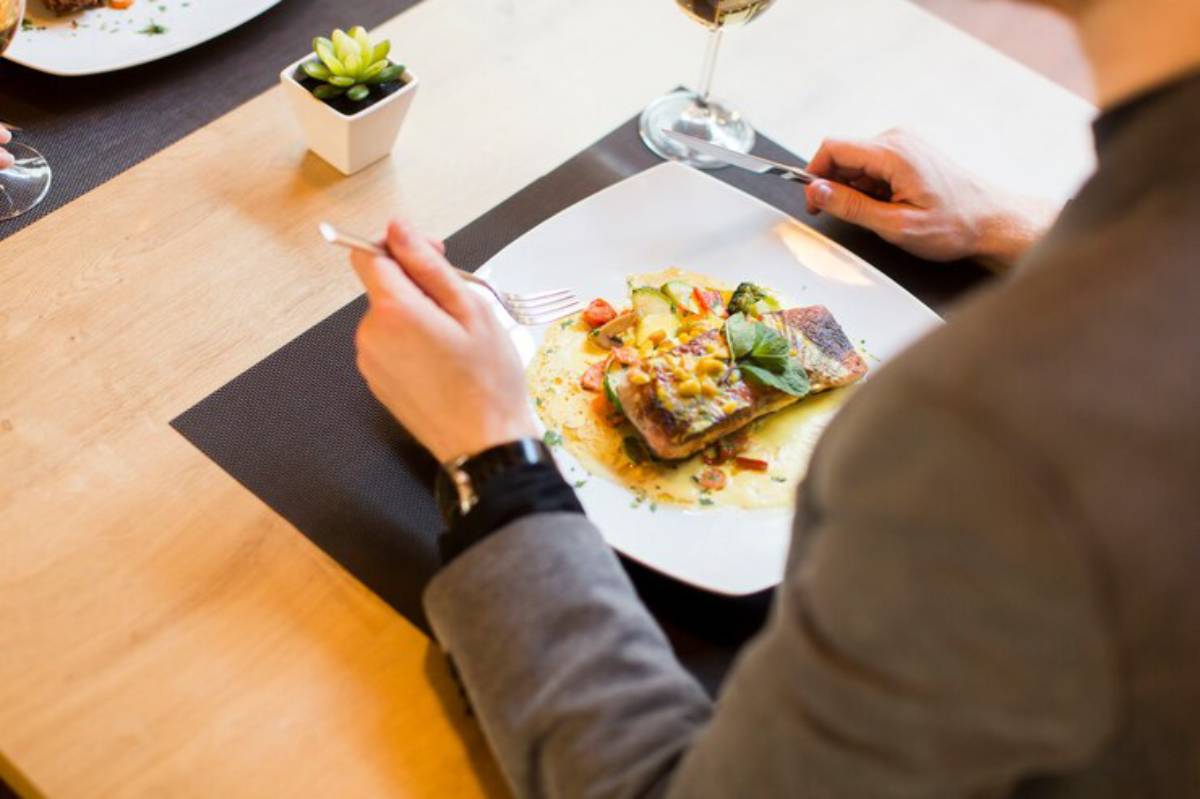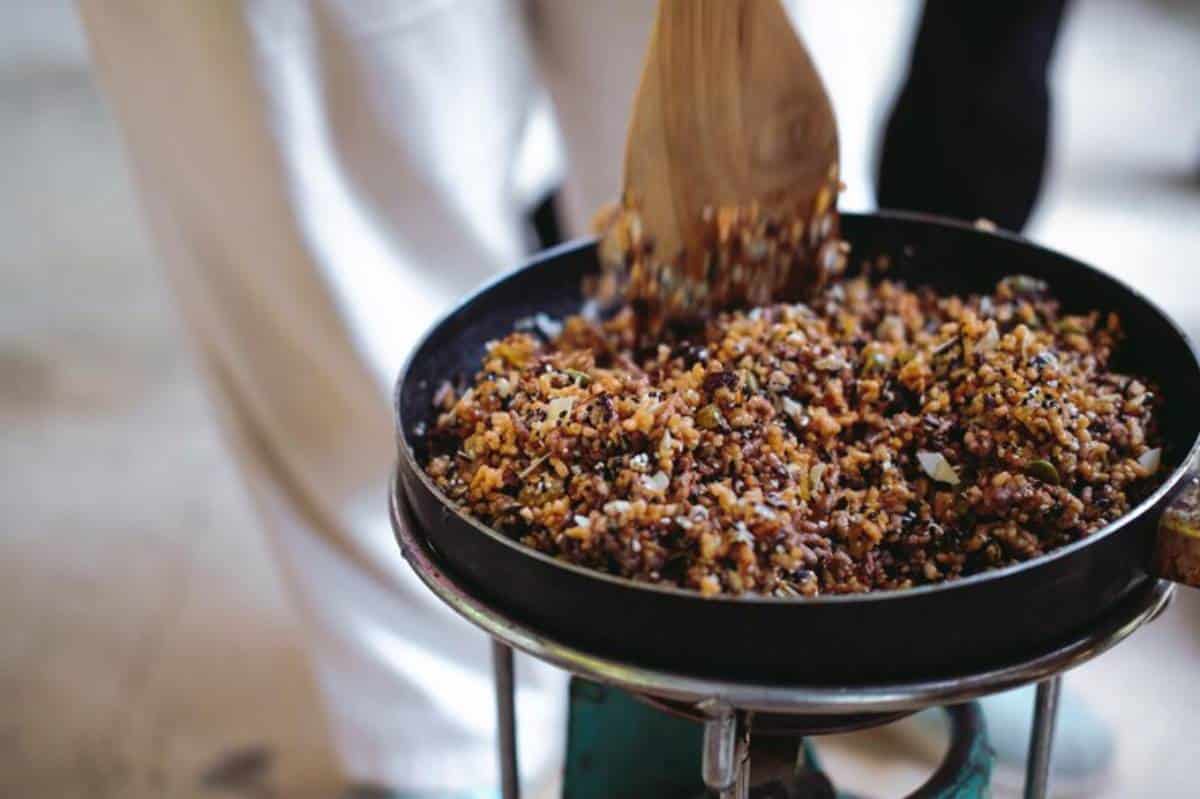
Using Microgreens & Edible Flowers for Garnish
Have you ever been served a dish that looked almost too beautiful to eat — vibrant little leaves perched on top, or delicate petals scattered like confetti across the plate? That’s not just decoration. It’s intentional, flavourful, and rooted in the art of refinement. Welcome to the world of gourmet garnishing.
The use of microgreens and edible flowers for plating isn’t about making food fussy. It’s about adding layers of flavour, colour, aroma, and even texture that elevate a dish from good to extraordinary. These seemingly small additions can radically enhance presentation while offering nuanced taste and seasonal storytelling.
Whether you’re plating for guests or simply want to transform your weekday meals, this guide will help you explore the power of edible garnishes. We’ll break down popular microgreen uses, explore the culinary value of edible blooms, and walk you through when and how to use them for the biggest visual and flavour impact.
Why Garnishes Deserve More Respect
More than just a pretty face
It’s easy to dismiss garnishes as afterthoughts — something thrown on for visual flair. But in modern gourmet plating, garnishes are integral to the dish.
They serve multiple functions:
- Aesthetic: Colour, contrast, and composition
- Flavour: Peppery, citrusy, herbal, or sweet notes
- Texture: Delicate crunch or soft bite
- Aroma: Floral or herbaceous tones to awaken the senses
A well-chosen garnish complements the dish. It never distracts — it enhances.
Small details, big impression
In restaurant plating, garnishes often define the final layer. But at home, they can be your entry point into elevating everyday cooking. Even a simple poached egg on toast feels refined with a scatter of mustard cress or chive flowers.
It’s the little things that often linger in memory — the unexpected floral finish or crisp micro basil leaf that ties the whole bite together.
Getting to Know Microgreens
What are microgreens?
Microgreens are the young seedlings of edible herbs, vegetables, or greens, typically harvested 7–21 days after germination. They’re not to be confused with sprouts (which are eaten with root and seed attached) or baby greens (which are more mature).
Despite their size, microgreens pack a punch of flavour, often more intense than their full-grown counterparts.
Common types and their flavour profiles
| Microgreen | Flavour Notes | Best Uses |
| Radish | Spicy, peppery | Eggs, Asian dishes, and ceviche |
| Pea shoots | Sweet, grassy | Salads, soft cheeses, and fish |
| Mustard cress | Hot, tangy | Meat dishes, bold sauces |
| Coriander | Bright, citrusy | Curries, tacos, fresh soups |
| Basil | Classic sweet herb | Pasta, caprese salads, and tomato-based |
| Amaranth | Mild, earthy, vibrant purple | Canapés, creamy plates, plated desserts |
Microgreens are especially helpful when working with muted or monotone dishes. A vibrant green pop against pale elements can be just what your plate needs.
If you’re already exploring colour composition for presentation, microgreens pair beautifully with ideas from our colour theory in gourmet presentation guide.
Working with Edible Flowers
A brief history and modern relevance
Edible flowers have been used in cuisines around the world for centuries — from rose water in Middle Eastern desserts to violet-infused French syrups. Today, they’re making a strong return in gourmet kitchens for their sensory appeal and seasonal versatility.
Unlike artificial garnishes, edible flowers can be eaten safely and provide real culinary value.
Popular edible flowers and how to use them
| Flower | Flavour Profile | Ideal For |
| Violas/pansies | Mild, grassy | Sweet or savoury plates, colourful salads |
| Nasturtiums | Peppery, watercress-like | Meats, carpaccio, grain bowls |
| Borage | Cucumber-like, cooling | Summer drinks, chilled soups, seafood |
| Calendula | Slightly bitter, saffron notes | Pasta, risottos, compound butters |
| Chive blossom | Oniony bite | Eggs, creamy sauces, potatoes |
| Lavender | Floral, slightly sweet | Desserts, syrups, baked goods |
Always make sure flowers are food-safe and pesticide-free. Don’t forage unless you’re absolutely sure what you’re picking.
When and How to Add Garnishes
Timing is everything
Microgreens and edible flowers should be added right before serving. Exposure to heat, sauce, or steam can wilt them quickly. Keep garnishes cool, dry, and protected until the last moment.
Less is more
You don’t need to cover the plate. A few well-placed garnishes can have more impact than an overload of petals.
Focus on:
- Placement: Use garnishes to draw attention to the central element.
- Balance: Spread visual weight evenly — avoid clumping.
- Relevance: Choose garnishes that tie into the dish’s flavour profile.
For example, chive flowers are perfect for garnishing a sour cream and potato dish, but may feel disjointed on a mango sorbet.
Techniques for Artistic Garnishing
Cluster, scatter, or stack?
The arrangement of your garnish can dramatically change the feel of the plate.
- Clustered: A small bunch of microgreens or petals near the protein adds elegance and cohesion.
- Scattered: Randomised distribution gives a natural, organic look — great for salads or rustic plates.
- Stacked: Building height using a garnish can lift a dish and provide visual drama.
Try combining two methods — a tight microgreen cluster with a few scattered petals — to guide the eye and maintain flow.
Using colour with intention
Microgreens are usually green, but amaranth, red mustard, or purple basil can offer contrast. Similarly, edible flowers come in a spectrum — from soft pastels to deep jewel tones.
Pair them based on:
- Contrast: Yellow nasturtiums against beetroot puree
- Complement: Blue borage with orange segments
- Mood: Soft violas for elegance, bold petals for drama
Real-World Example: The Power of Simple Elevation
You’ve made a pea risotto. It’s green, creamy, comforting. Delicious — but visually flat.
Now imagine:
- Topping it with a few pea shoots for height and echoing flavour
- Adding a purple amaranth cluster for contrast
- Finishing with a few bright pansy petals for colour
Now the plate sings. And the best part? It took less than 30 seconds.
This same approach works wonderfully when working with refined bases like those found in our gourmet vegetables with sous vide guide. Just one garnish can take that sous vide carrot or beetroot to a new level of sophistication.
Where to Buy and How to Store

Sourcing quality garnishes
- Farmers’ markets: Many sell fresh, locally grown edible flowers.
- Specialty food stores: Look in the refrigerated herb section.
- Grow your own: Microgreens are surprisingly easy to grow in trays on a windowsill.
- Online suppliers: Many companies deliver fresh microgreens and flowers in protective packaging.
Storage tips
- Keep dry and refrigerated in breathable containers
- Line containers with paper towels to absorb moisture
- Use within 3–4 days for best freshness and texture
Never wash directly under running water — mist gently if needed, and pat dry carefully.
Common Mistakes to Avoid
Using inedible flowers
Not all flowers are safe to eat. Avoid ornamental varieties and always check the source. Some flowers look beautiful but can cause illness.
Overpowering the main dish
Some microgreens (like mustard or radish) have a strong flavour. Use them in moderation so they don’t overwhelm the plate.
Garnishing too early
Both microgreens and edible flowers wilt quickly. Only garnish once plating is finished and the dish is ready to be served.
Conclusion: Small Touches, Big Impact

In the world of gourmet presentation, microgreens and edible flowers aren’t just optional flair — they’re tools that connect taste and aesthetics. These delicate touches bring freshness, seasonal cues, and colour contrast to any dish, whether you’re plating for friends or adding joy to a solo dinner.
By embracing gourmet garnish tips and using them with intention, you’re not just making food look better — you’re enriching the entire eating experience. You’re saying, “This matters. You matter.”
So go ahead. Sprinkle that pansy petal. Nestle that mustard cress. Let your creativity blossom — one garnish at a time.


